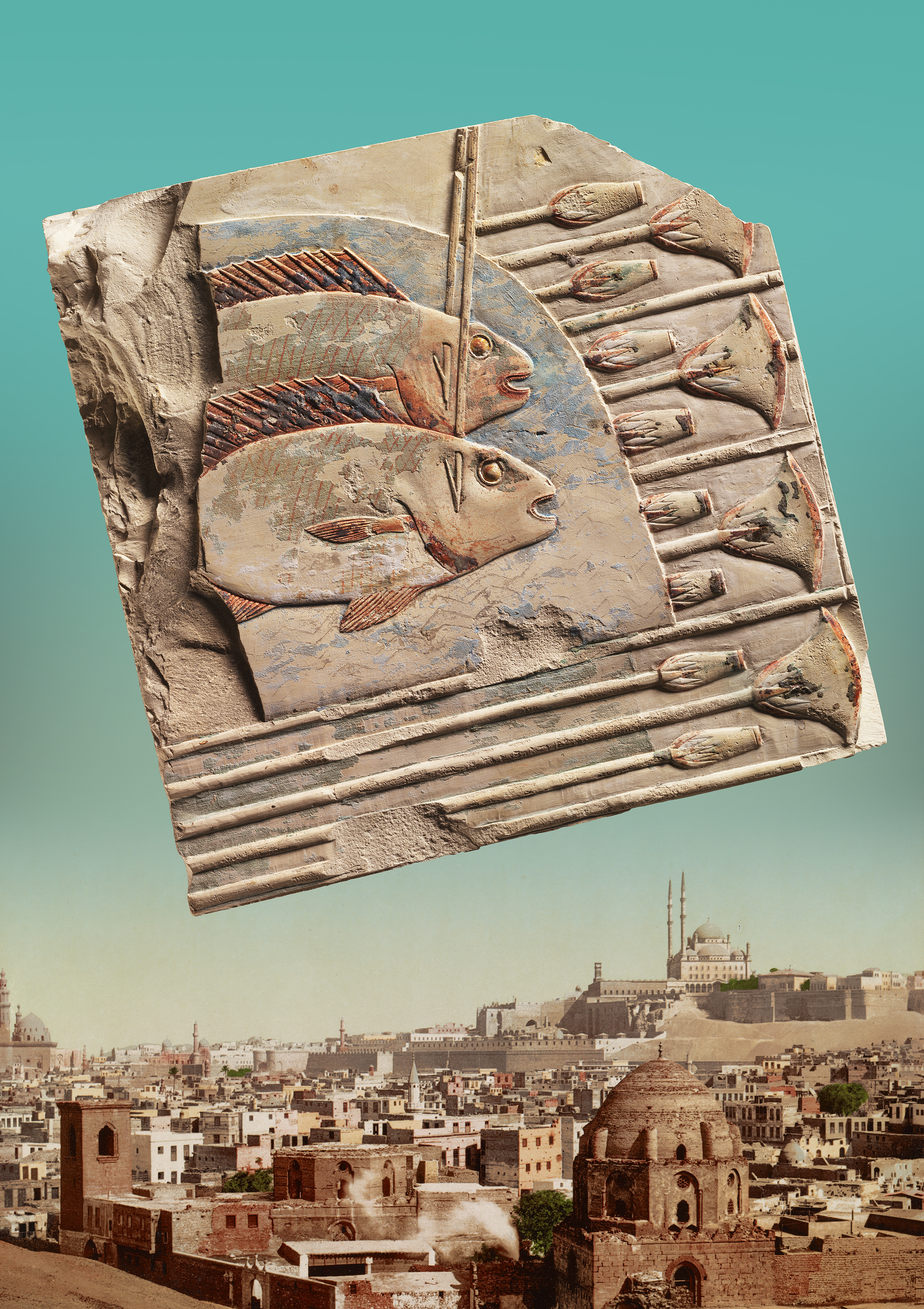
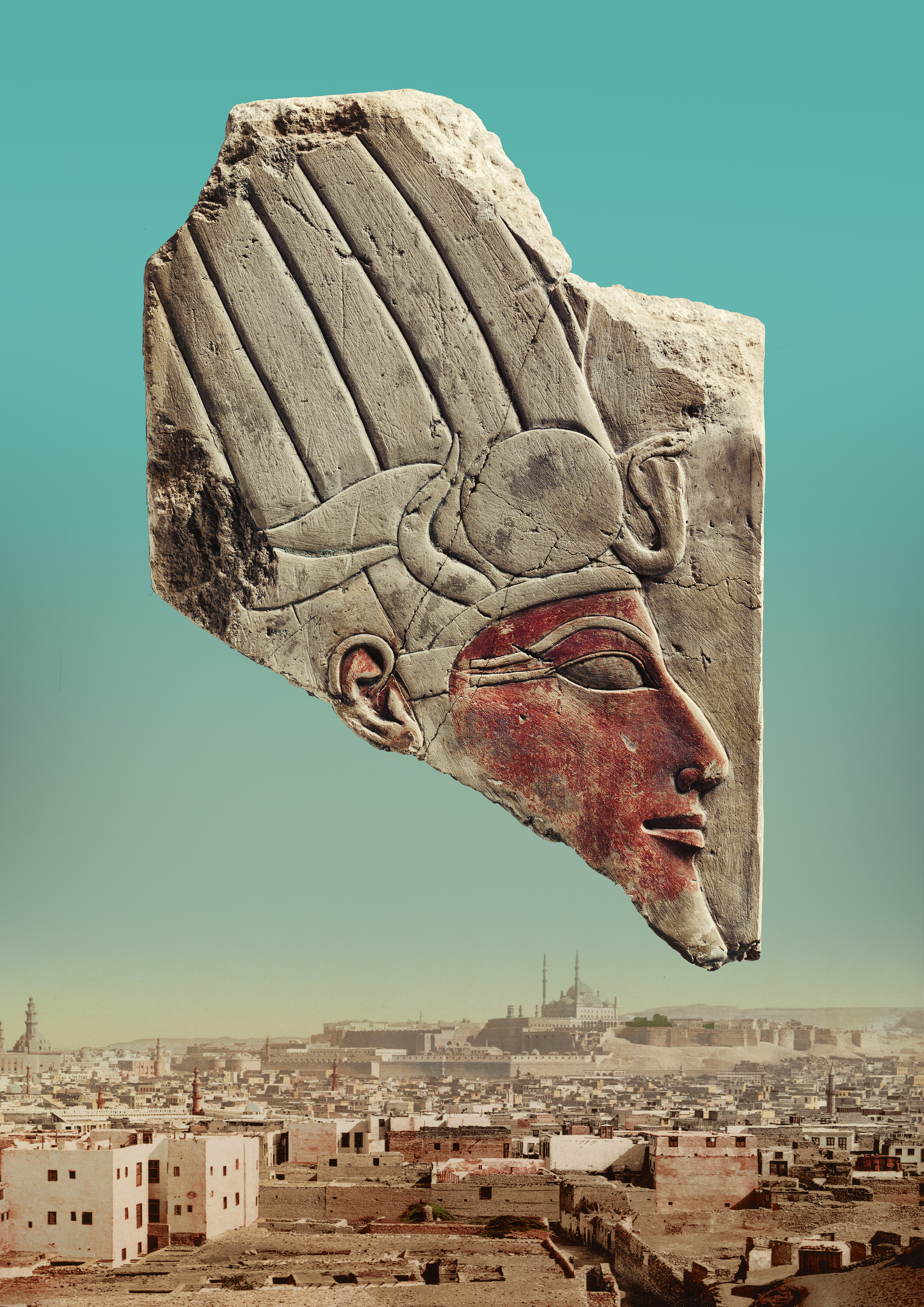
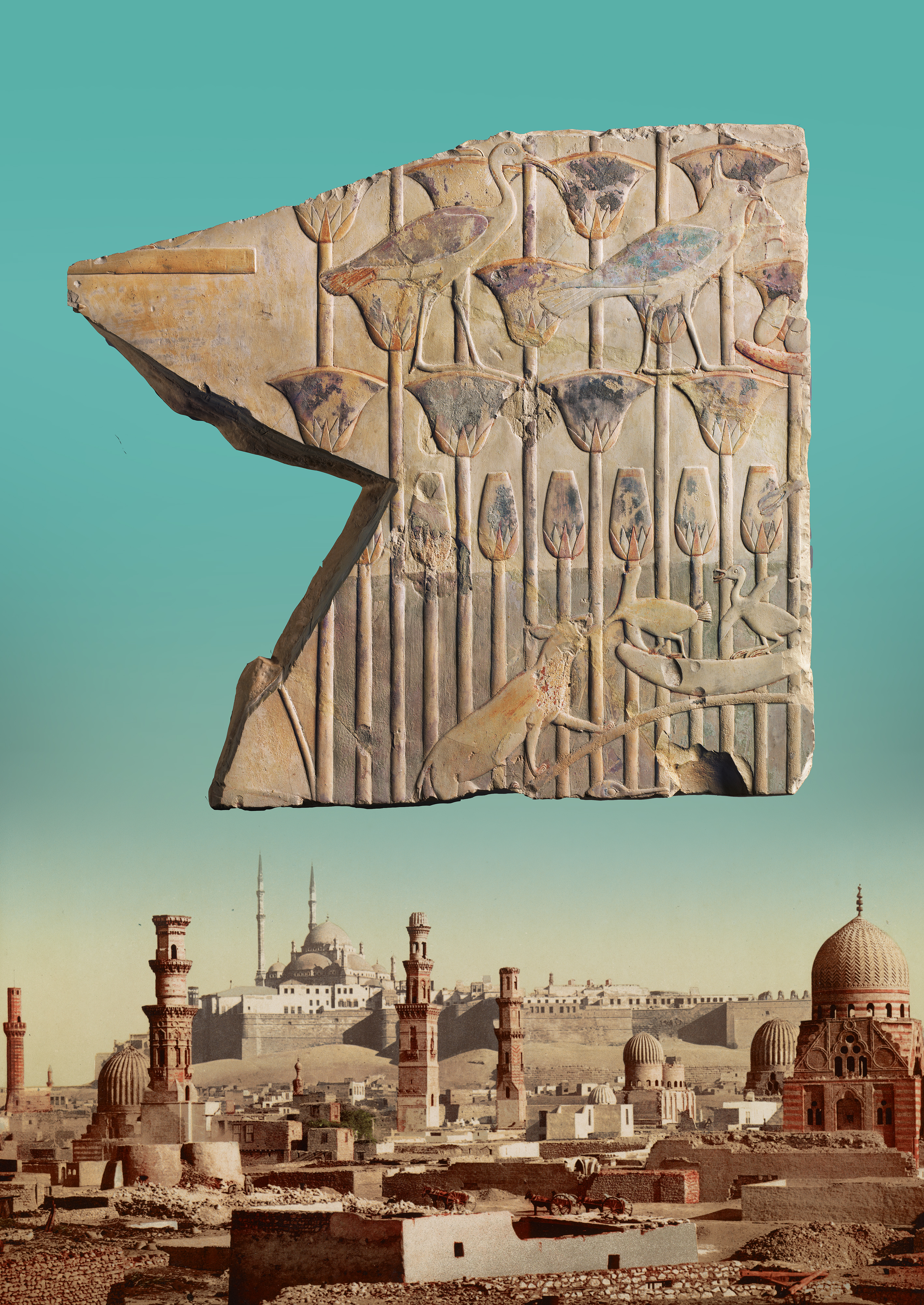
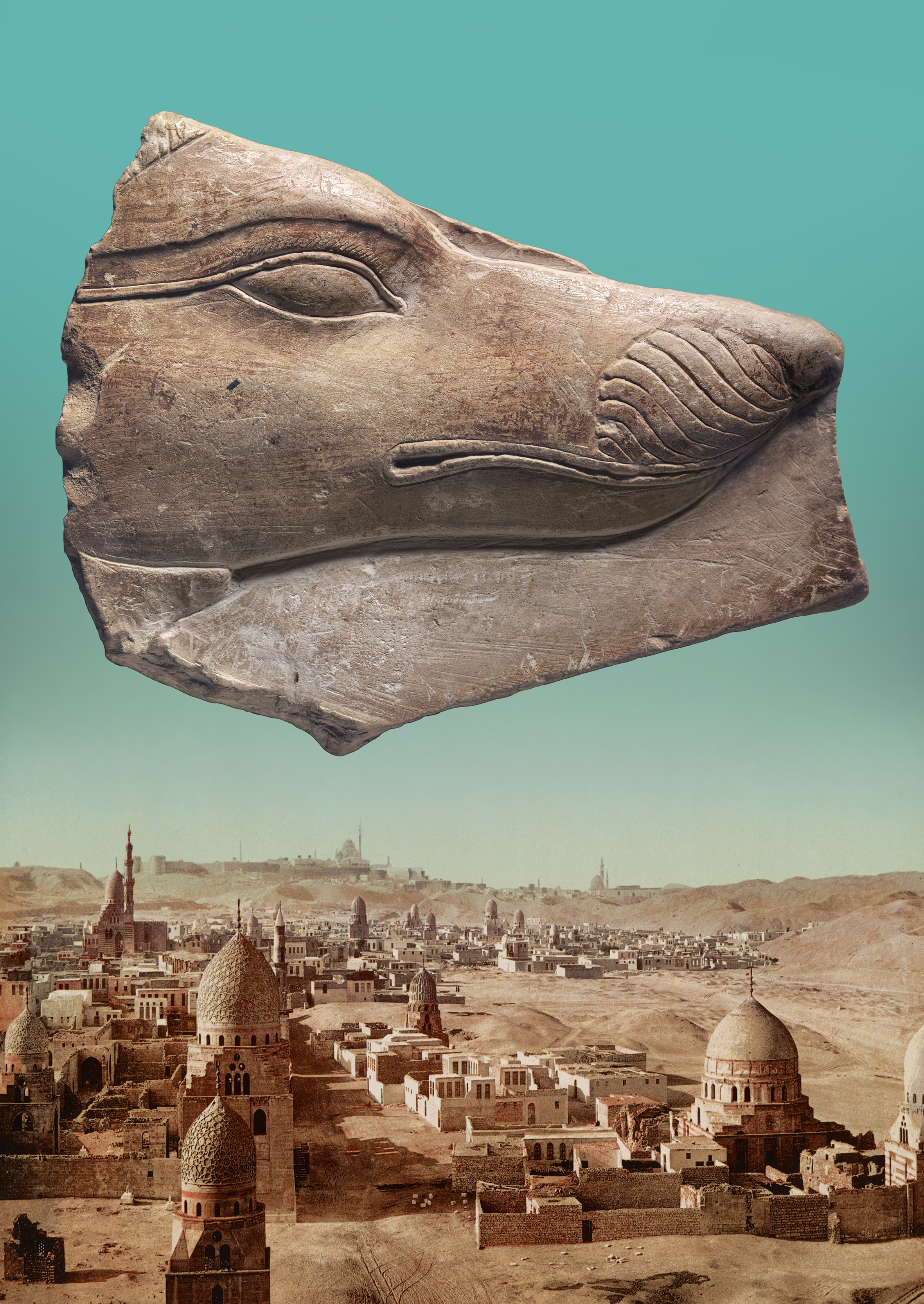
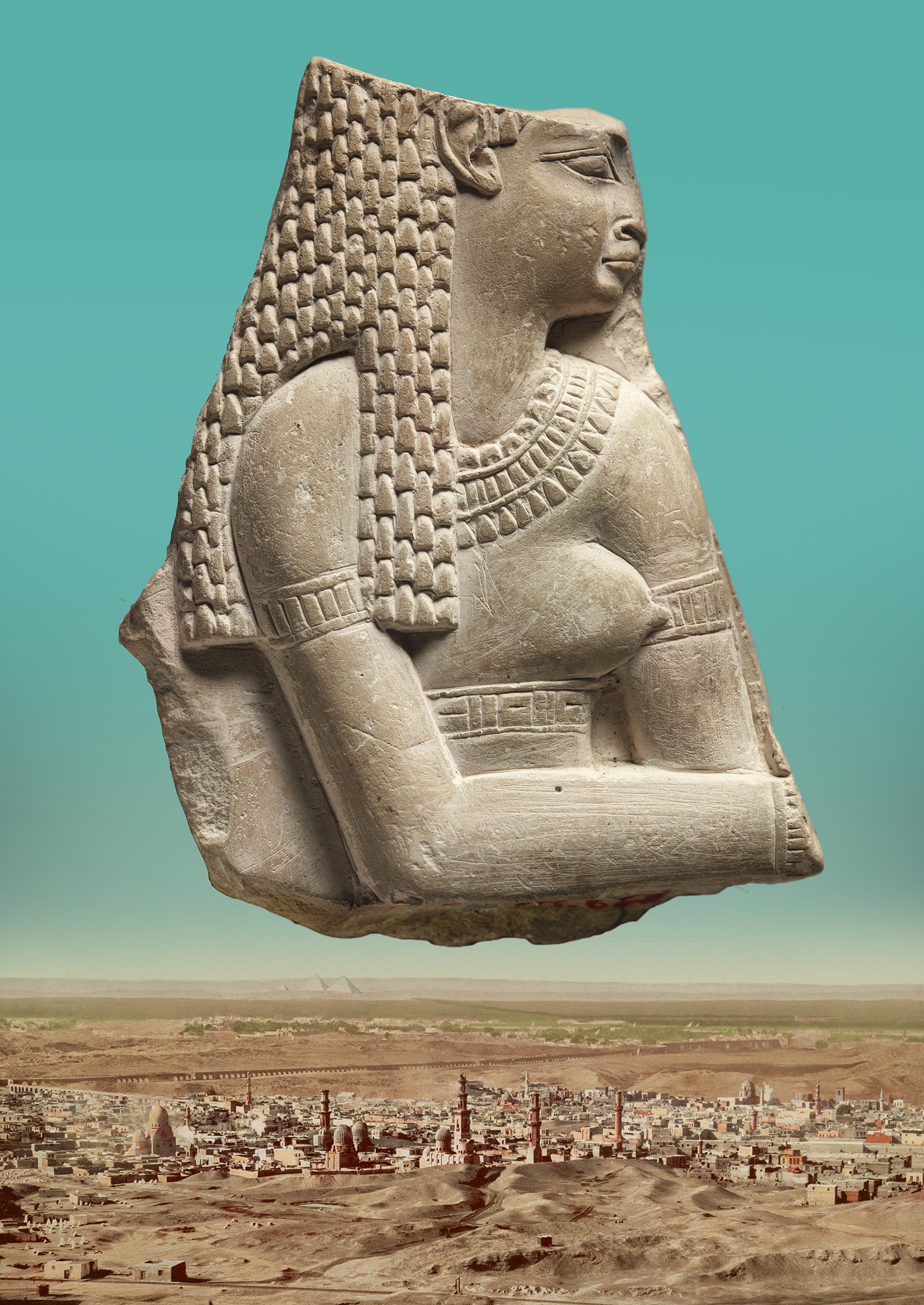
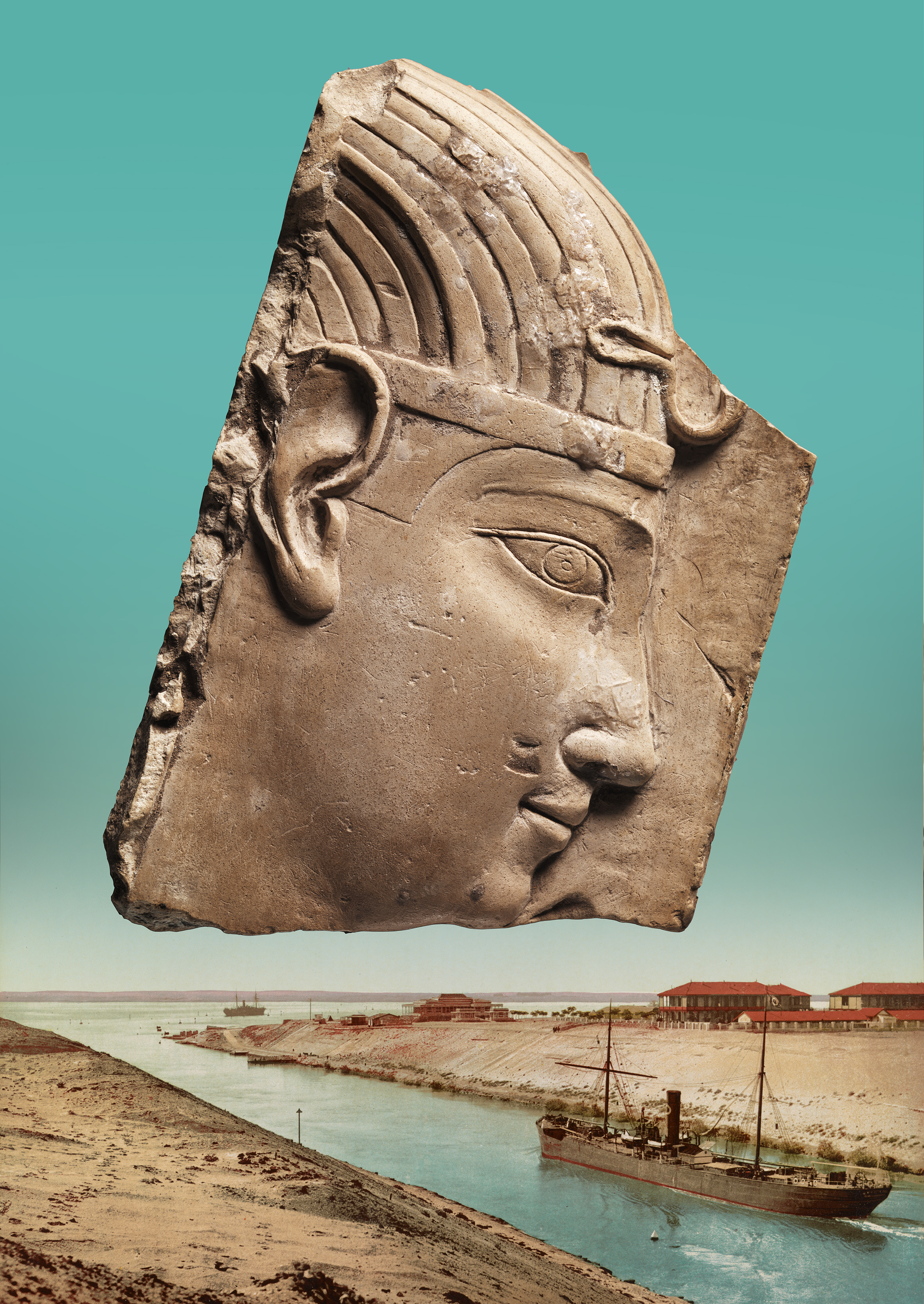
Cairo-glyph.
Sept 2021.
︎ ︎ ︎ ︎
Still life with antiquity & city. A lockdown project.
Digital composite collages made using ancient Egyptian objects over high res scans of “PhotoCrom” landscapes of Cairo from 1905.
Objects courtesy of the Cleveland Museum of Art. Cairo PhotoChrom scans, Library of Congress.
Sept 2021.
︎ ︎ ︎ ︎

Votive Relief of a WILD DOG’s HEAD.
early ptolemaic dynasty, 305-30 BC.
over The Tombs of the Caliphs, CAIRO Citadel in Background, c. 1905.
Object is a trial piece, carved on a large flake of limestone and likely made as an example to be copied by other sculptors. Some of these were double sided - on the other side of this one was a temple diety (below right).

Votive Relief of a King.
early ptolemaic dynasty, 305-246 BC.
Over the suez canal, Entrance to Lake Timsah c. 1905.
Object is a trial piece, carved on a large flake of limestone and likely made as an example to be copied by other sculptors.

Relief of Hatshepsut or Tuthmosis III, 1479-1425 BC.
Thebes, Deir el-Bahari, New Kingdom, Dynasty 18.
OVER The Citadel and Mokattam of Old Cairo, c. 1905.
At the death of King Tuthmosis II, a child was proclaimed king, Tuthmosis III. His aunt Hatshepsut was named to serve as his regent; however, she swiftly proclaimed herself queen and ruled in the boy's stead for over 20 years. To further assert her power she often had herself portrayed in sculpture as a king with masculine torso and even a beard. She is shown here wearing crowns usually reserved for kings. When Tuthmosis III finally ascended to the throne, he had many of her monuments destroyed. This one of her survived.

Marsh Scene with Cat and Birds, c. 667-647 BC.
THEBES, Late period, Late dynasty 25 to early dynasty 26.
Over The Tombs of the Mamelouks, Cairo. c.1905.
A civet cat is attacking a bird's nest in a great papyrus swamp. Above, a hoopoe bird and a crane are perching. At left there was probably a mongoose attacking another nest, as in previous Old Kingdom scenes.

Spearing Fish, c. 667-647 BC.
Thebes, Late Period, late Dynasty 25 to early Dynasty 26.
over a view of cairo’s citadel, c.1905.
The spearing of red finned fish against a blue painted background of water is a classic subject in the painted reliefs found in tombs of the Pyramid Age. The way that the very ordered, almost Art Deco, papyrus thicket in the background is represented is quite unlike the tangled riot of vegetation typical of the actual plant.

Temple Relief of a Deity, 360-246 BC.
